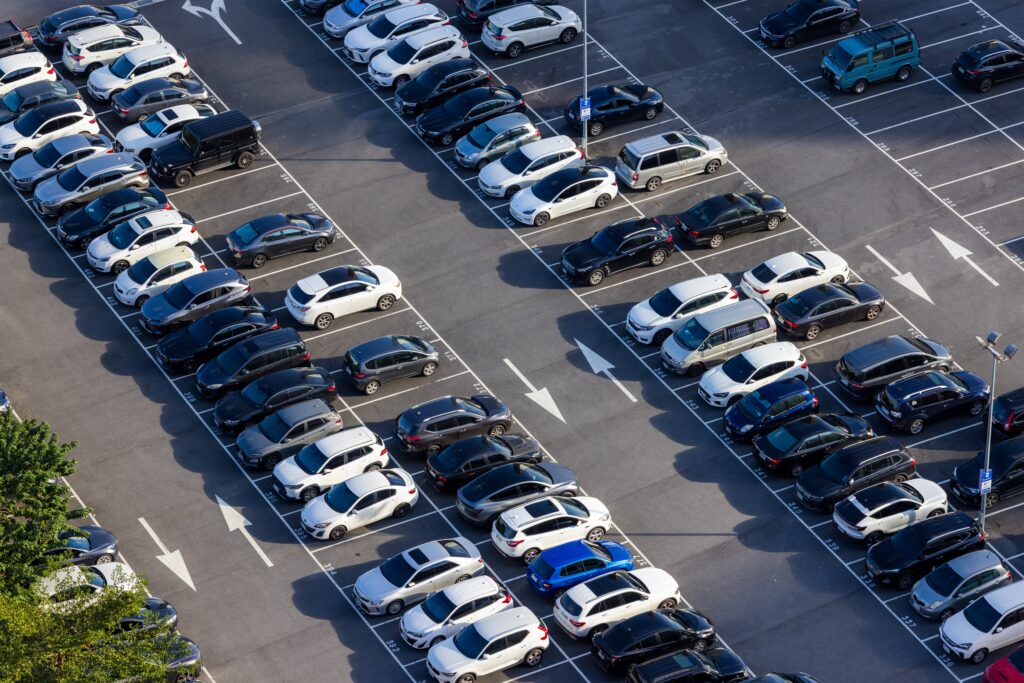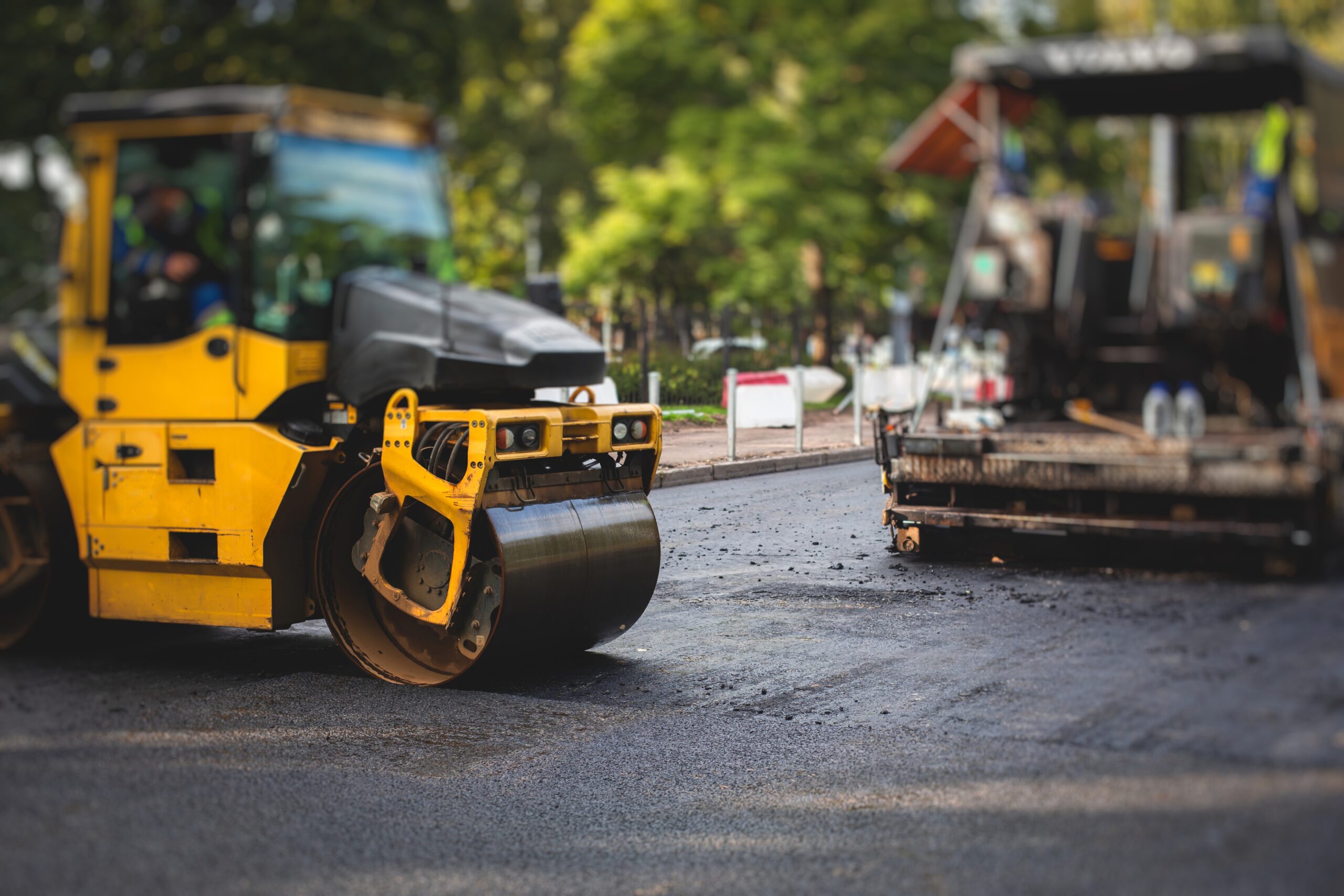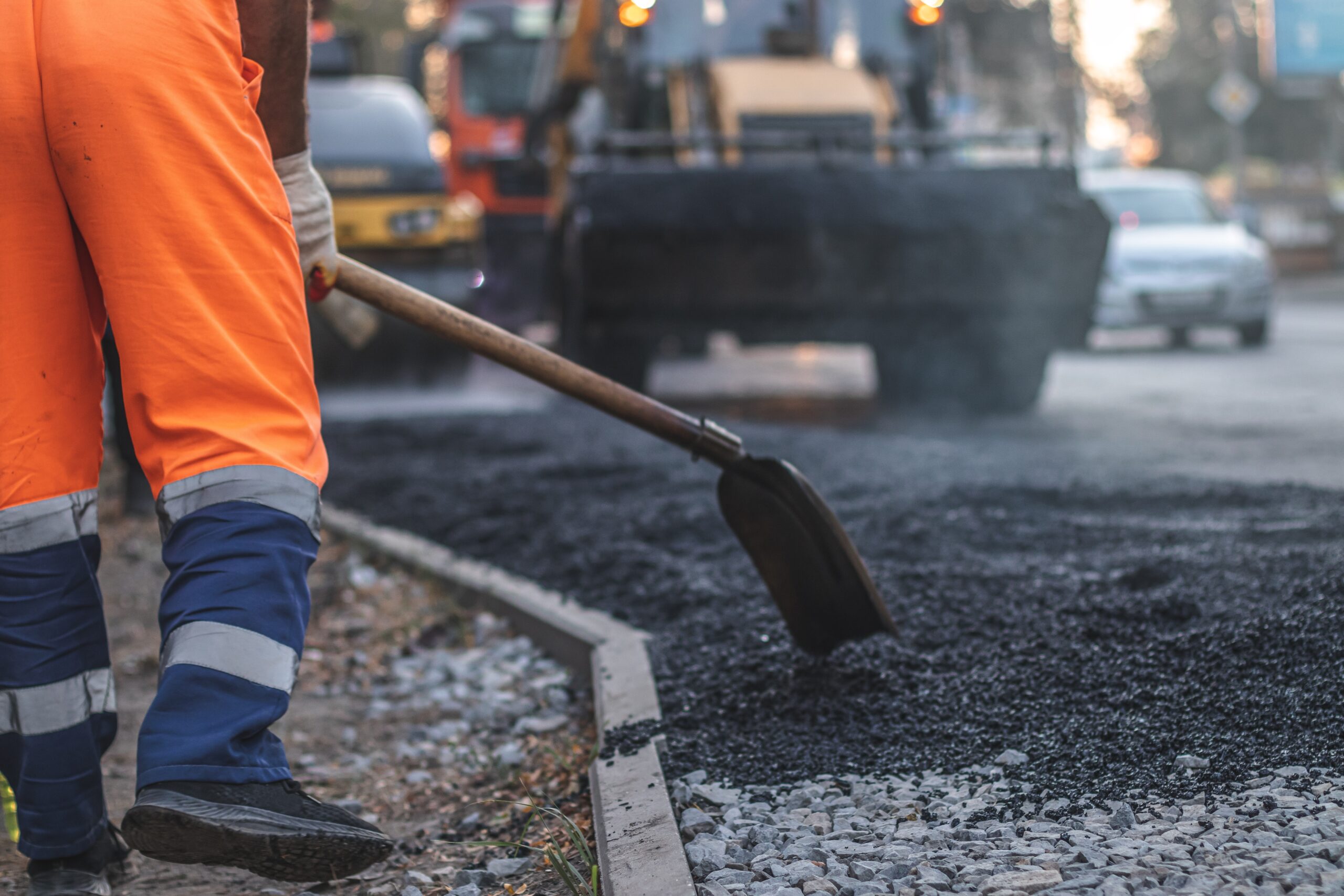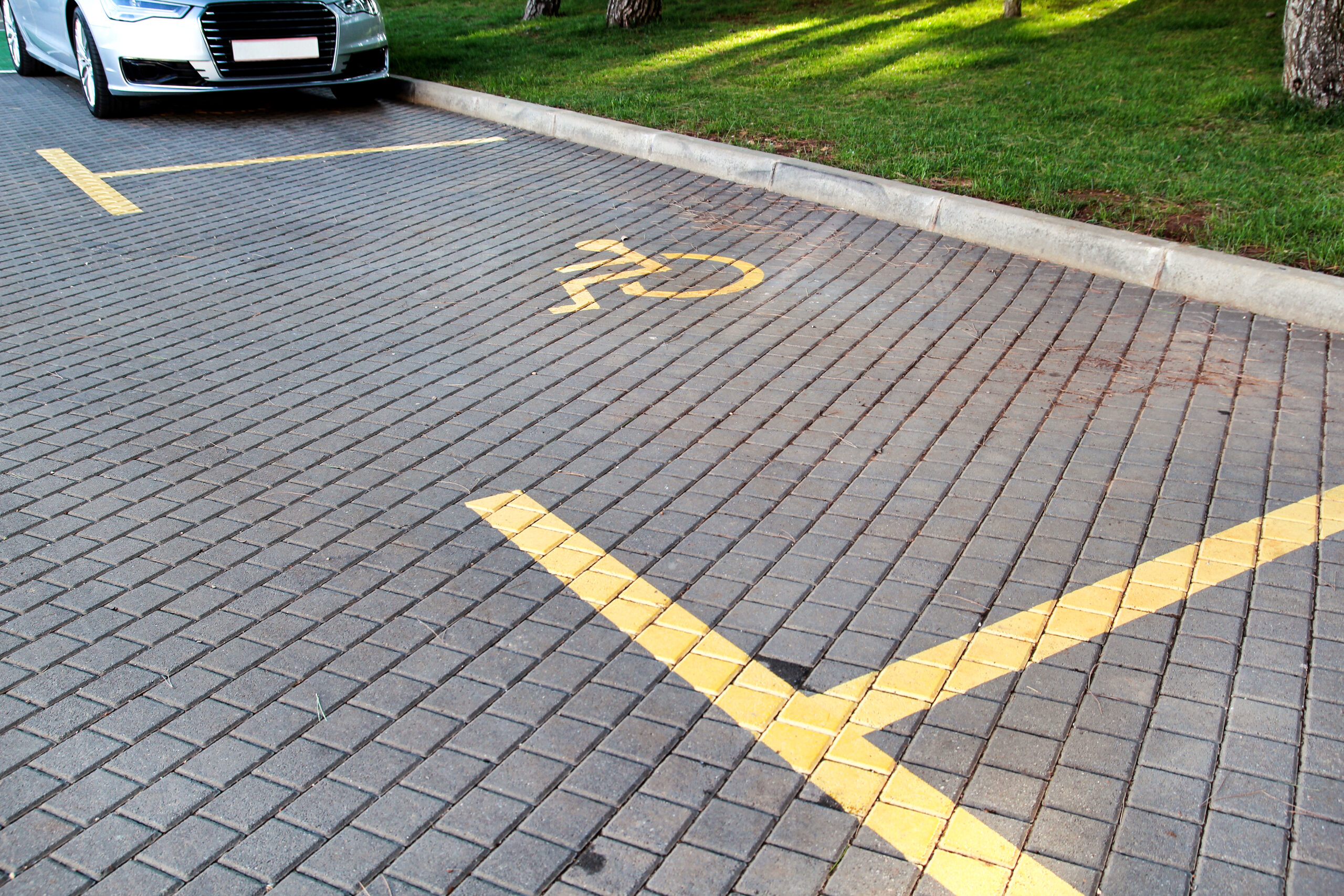
Sealcoating is the process of applying a thin protective layer over asphalt pavement to shield it from weather, heavy traffic, and chemical spills. It prevents asphalt from becoming brittle, reduces cracking, and restores the dark finish that makes lots look new.
According to the Minnesota Department of Transportation, sealcoating can extend the life of asphalt pavement by 5-6 years per application when performed as part of a routine maintenance program.
In Colorado Springs, parking lots face harsh conditions, including intense UV exposure at high altitude, wide temperature swings, snow, ice, and the use of de-icing chemicals. Sealcoating is one of the most effective defenses to keep parking lots durable, safe, and attractive.
In this article, we’ll cover how asphalt breaks down, why sealcoating is essential in Colorado Springs, and why 2025 is the right year for property managers to invest in this vital service.
Why Sealcoating Matters for Parking Lots
Parking lots in Colorado Springs face constant stress from sun, snow, and traffic. Without protection, asphalt deteriorates rapidly, resulting in cracks, potholes, and costly repairs.
Sealcoating is one of the most effective ways to slow this process and extend the service life of pavement.
1. How Asphalt Breaks Down Without Sealcoating
Asphalt oxidizes when exposed to UV rays and traffic, becoming brittle and prone to cracking. Freeze-thaw cycles then widen those cracks, creating potholes.
Research from the National Center for Asphalt Technology (NCAT) found that pavement sections treated with preventive maintenance strategies, such as seal coating and crack sealing, exhibited significantly slower crack growth compared to untreated sections.
2. The Protective Role of Sealcoating
Sealcoating creates a barrier that blocks water, oils, de-icing salts, and UV rays from penetrating the asphalt.
This protective layer restores flexibility, helping lots withstand heavy vehicle loads and wide temperature swings.
Is sealcoating only for old parking lots?
No. Sealcoating benefits both new and older lots. For new asphalt, it locks in flexibility and prevents early wear. For older lots, it rejuvenates the surface, slows further deterioration, and improves appearance.
Key Benefits of Regular Sealcoating
Sealcoating provides more than a cosmetic upgrade; it’s a preventive strategy that helps property managers reduce costs, enhance safety, and extend the lifespan of asphalt.
- Longevity: Sealcoating slows oxidation, blocks UV rays, and prevents water infiltration. This helps asphalt stay flexible and durable for years beyond its untreated life.
- Cost Savings: By sealing the surface, property owners avoid costly overlays or full replacements. Preventive care keeps small problems from becoming expensive repairs.
- Curb Appeal: A fresh sealcoat restores the deep black finish of asphalt, making properties look well-maintained and more professional, which is especially important for businesses and public facilities.
- Protection: Sealcoating creates a barrier against oil, gas, salt, and de-icing chemicals, all of which can soften or erode unprotected asphalt over time.
According to the Minnesota Department of Transportation, each sealcoating application can extend pavement life by 3-5 years when incorporated into a comprehensive maintenance program.
How Often Should Parking Lots Be Sealcoated?
Every 3-5 years is recommended, though high-traffic areas like shopping centers or warehouses may require more frequent applications.
Sealcoating in Colorado Springs’ Climate
Colorado Springs’ elevation and seasonal extremes create conditions that accelerate asphalt deterioration. Sealcoating helps protect pavement against these local stress factors.
- Freeze-Thaw Cycles: When water enters small cracks and freezes, it expands, causing the pavement to separate. Repeated cycles weaken the structure and lead to potholes. Sealcoating reduces water infiltration, slowing this damage.
- High-Altitude Sun: At high elevations, asphalt is exposed to stronger ultraviolet radiation. Prolonged UV exposure oxidizes the surface, causing it to dry, fade, and lose flexibility. Sealcoating forms a protective layer that shields pavement from this process.
- Snow, Ice, and De-Icing Chemicals: Snowplows and de-icing salts place heavy stress on parking lots each winter. Abrasion and chemical reactions erode untreated asphalt, while sealcoating creates a barrier that lessens the impact of both.
The Federal Highway Administration highlights that environmental factors, such as freeze-thaw cycles and moisture, are major contributors to pavement deterioration, underscoring the value of protective treatments.

Does sealcoating help with freeze-thaw damage?
Yes. By sealing pores and cracks, sealcoating reduces water penetration, which minimizes the risk of freeze-thaw expansion damage.
Cost Savings With Preventive Maintenance
Sealcoating is one of the most cost-effective methods for preserving asphalt.
- Lower Costs: Sealcoating costs far less per square foot than resurfacing or full replacement.
- Lifespan Extension: Each application delays the need for major repairs by several years.
- Budget Predictability: Property managers can schedule sealcoating at regular intervals to avoid unexpected repair bills.
- Liability Reduction: Smooth, well-maintained lots reduce risks of trips, falls, and vehicle damage.
Is sealcoating worth it during high construction inflation?
Yes. With rising asphalt and labor costs, preventive maintenance delivers stronger ROI than ever.
Parking Lot Safety and Functionality
Sealcoating does more than protect asphalt; it directly improves the safety and usability of parking lots.
- Safer Surfaces: A smooth, even surface reduces the chances of slips, trips, and skids for both drivers and pedestrians.
- Better Visibility: Sealcoating restores a dark finish that provides the perfect contrast for bright, long-lasting striping, making traffic lanes, crosswalks, and parking spaces clearer and more visible.
- Accessibility: Freshly sealed pavement supports accurate ADA-compliant striping and ramps, ensuring parking lots remain safe and accessible for all users.
Does sealcoating improve ADA compliance?
Not by itself, but it creates the smooth surface needed for clear striping and properly marked ADA-compliant spaces.
Signs Your Parking Lot Needs Sealcoating
You can often see when it’s time to schedule a sealcoat:
- Asphalt color has faded from black to gray.
- Small cracks are spreading across the lot.
- Water pools instead of draining properly.
- The surface feels brittle or rough underfoot.
Addressing these signs early prevents minor issues from turning into costly structural repairs.
Can sealcoating repair potholes?
No. Potholes must be filled before sealcoating. Sealcoating prevents new damage but doesn’t repair existing failures.
Best Practices for Sealcoating
For best results, sealcoating should follow a few proven practices:
- Apply every 3-5 years, depending on traffic and local climate conditions.
- Pair sealcoating with crack sealing and pothole repair.
- Use professional crews with commercial-grade equipment.
- Schedule application in warm, dry weather (spring through early fall).
Can sealcoating be done in winter?
No. Sealcoating requires dry conditions and temperatures above 50°F for proper curing to occur.
Who Benefits Most From Sealcoating Services
Sealcoating adds value across many property types, but for some, the benefits are especially pronounced due to high traffic, heavy loads, or safety requirements.
- Retail Centers: Shopping centers benefit from well-kept parking lots that attract customers and reduce maintenance needs, keeping the property looking professional.
- Industrial Warehouses: Loading zones see heavy truck traffic. Sealcoating protects those high-stress areas and helps delay structural failures or disruptive repairs.
- Apartments & HOAs: Properties with many residents and visitors require safe and smooth parking lots. Sealcoating helps reduce trip hazards, supports inspection compliance, and enhances tenant satisfaction.
- Churches, Schools, and Healthcare Facilities: These types of properties usually handle surges in traffic during events or peak hours. Sealcoating ensures smoother, safer parking surfaces during periods of high demand.
The NCAT Pavement Preservation Group Study compared treated and untreated test sections over 4-11 years and showed that preservation treatments (like sealcoating, crack sealing, etc.) slow deterioration and extend pavement life compared to untreated controls.
Does traffic volume affect sealcoating frequency?
Yes. High-use lots may require sealcoating more often (e.g., every 2-3 years), while lots with lighter traffic may go 4-5 years between applications.
Choosing a Parking Lot Contractor in Colorado Springs
The contractor you choose is as important as the sealcoating itself. A qualified partner ensures quality work, safety, and adherence to compliance standards.
What to look for:
- Proven experience with large commercial properties.
- In-house crews and modern equipment.
- Local expertise in Colorado Springs’ climate.
- Positive reviews, case studies, and references.
At Asphalt Coatings Company, we’ve delivered professional paving and sealcoating services across Colorado since 1986, trusted by shopping centers, warehouses, apartment complexes, and other commercial properties.
Should I ask for references before hiring?
Yes. A reputable contractor will provide references, photos, and maintenance plans before work begins.
Protect Your Colorado Springs Parking Lot in 2025
Sealcoating is one of the most effective ways to protect your investment. It saves money, extends pavement life, and keeps properties safe and professional-looking. In Colorado Springs, where weather conditions accelerate asphalt damage, preventive maintenance is essential.
Contact Asphalt Coatings Company today for a free sealcoating quote and keep your parking lot in top condition for years to come.

Frequently Asked Questions
1. How long does sealcoating last in Colorado Springs?
Sealcoating generally lasts 3-5 years, although the exact lifespan depends on various factors, including traffic volume and weather conditions. High-use commercial lots may need more frequent applications, while lighter-use lots can last longer.
2. Can parking lots be used immediately after sealcoating?
No. Sealcoating requires time to cure and harden. Most lots can safely reopen within 24 to 48 hours, but cooler or wetter conditions may extend the drying period.
3. Is modern sealcoating environmentally friendly?
Yes. Many modern sealcoat products are low-VOC and designed to be safer for the environment. By extending pavement life, sealcoating also reduces the need for resource-heavy asphalt replacement.
4. Does sealcoating affect line striping?
Yes. Sealcoating covers existing markings, so parking lots are always re-striped afterward. This ensures clear, visible lines for traffic flow, ADA compliance, and safety.
5. How does sealcoating compare to asphalt overlays?
Sealcoating is a preventive maintenance treatment that protects the surface. Asphalt overlays, by contrast, add a new layer of asphalt to address structural issues. Overlays are far more expensive and typically only used when damage is advanced.



